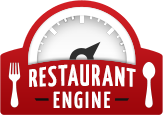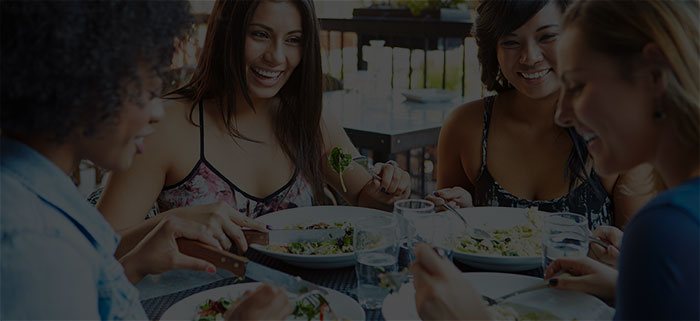5 Restaurant Websites Best Practices
Our last post covered 5 restaurant websites worst practices. Now let’s dig into restaurant websites best practices to help your restaurant thrive on the web and attract more customers.
The success of a restaurant business depends on many factors. But these days, their web presence is among the most important areas a restaurant should focus their efforts. Your customers are finding you via the web more than ever before. It’s crucial to make the right first impression that converts casual web visitors into booked reservations.
My previous post told what you want to avoid. This post is all about what you should strive for to get the most out of your restaurant website. And away we go…
1. Say goodbye to Flash. Say hello to WordPress.
We’ve already covered why Flash is bad for your restaurant website (it isn’t visible on mobile devices like iPhone and iPad, it does nothing to help SEO).
So what’s a good alternative to using Flash? WordPress. It’s a powerful content management system (CMS) that gives you full control over your content — in our case, your online menus, pages, blog, contact form, online reservations, events calendar, you name it. WordPress is both powerful and easy-to-use at the same time. That’s why it’s the web’s most popular CMS.
Technically speaking, WordPress alone isn’t the Flash alternative. But in conjunction with web standard building blocks like HTML5 and CSS3, you’ll have a solid foundation for a great site moving forward — one that is SEO-friendly, easily maintained, and flexible to grow and evolve over time.
2. Online menus with prices
Your food menu is the focal point of your restaurant business. It’s your product, your main attraction, and the thing that people base their recommendation on (“You must try the Salman at Restaurant XYZ”).
So why do restaurant websites relegate their menu to bulky PDF file that most users will never download? Make your online menu part of your core website, accessible from any page. With a nicely laid out “menu” page on your website, which lists your food items with photos, descriptions, and prices, your visitors will know exactly what to expect and will come away ready to make their decision about where to dine. And since your menu looks so delicious, why wouldn’t they choose your restaurant, right?
Prices are important too. Make sure you include price information on your menu page. Your customers are very conscious of how much they’re spending and this is a major factor in their dining decisions. Make it easy for them by noting prices in your online menus.
3. Photo Gallery
Your site may feature beautifully framed photos as supporting imagery, but there should also be a fully gallery for visitors to browse and get a feel for your restaurant’s atmostphere. Why is this so important? New customers want to know what to expect when they walk inside. Maybe they’re taking a first date to your restaurant and need to make sure it’s a classy dining experience. Or perhaps they’re in the mood for a casual, quick bite with a co-worker and don’t want something overly romantic.
A nice selection of photos helps answer these questions for your prospective customer and makes their decision process easier. Don’t overload them with too many photos. 5-10 carefully chosen shots that show a good variety of angles will do the trick.
Your website should feature a slick, but accessible photo gallery. Auto-rotation of photos is nice, but there should also be navigational controls. Again, you want to avoid using Flash. A beautiful website photo gallery can be achieved without Flash and fully integrated with WordPress too! Keep your restaurant photo gallery updated and accurate using your CMS.
4. Prominently displayed contact info and location
You’d be surprised how many restaurant websites fail to show their contact info and location on their website. Your visitors need to be able to call you for a reservation. It’s great if you have an online reservation form, but give them the phone number as well as many people just want to talk to someone. The phone number should be prominently displayed on the front page and every interior page.
Equally important is your location. Be sure to place your address on your website in text format, which allows visitors to copy and paste. It’s also helpful to link to or embed a Google Map of your location. Don’t use a custom designed map image. Use a Google Map, this way it’s interactive, and people can use it to get directions from wherever they’re coming from.
5. Mobile restaurant website
We know users are browsing the web on mobile devices more than ever before. iPhones, iPads, Android, Blackberries… They’re everywhere. What’s important for you, as a restaurant owner, is mobile web browsing goes hand in hand with marketing your restaurant. Your customers are on the go, looking for a place to eat, and searching for restaurants on their mobile phone. You’d better make sure your restaurant can be found on a mobile device.
What does that mean exactly? Going with a non-Flash website is a good start, but it’s not the only solution. You also want to ensure that your site is formatted correctly for mobile devices. At Restaurant Engine, we use the web design technique known as Responsive Web Design. This means your website scales and adapts to any screen, any size, and optimizes for a touch interface. It’s not an alternative mobile version, which looks completely different from your desktop website. It’s your website, your branding and design, elegantly adapted to the mobile screen. Cool, huh?


Leave a Reply